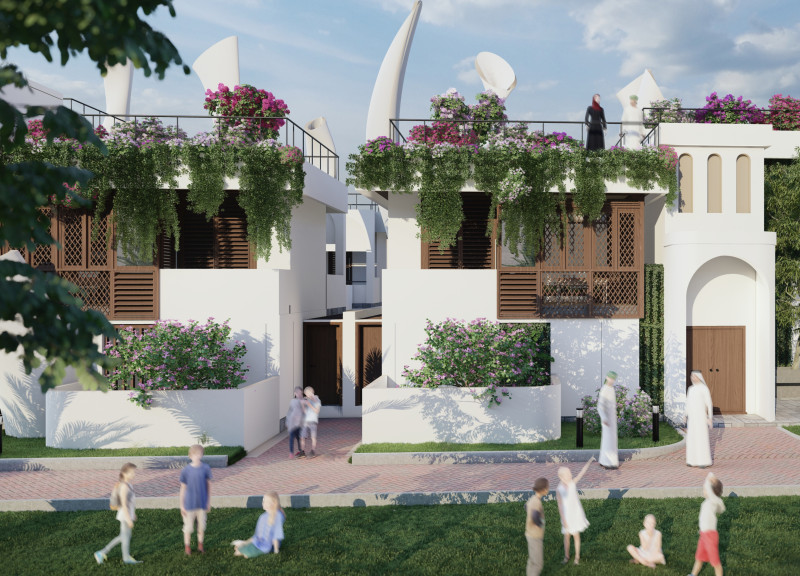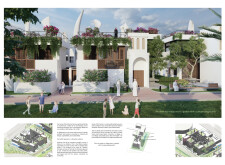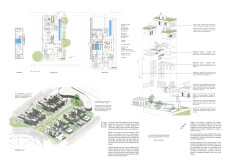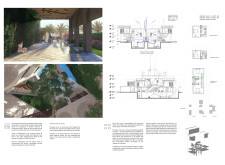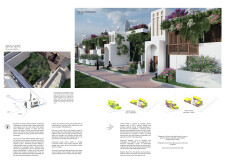5 key facts about this project
## Overview
Located in the United Arab Emirates, the urban eco-village project is designed to serve as both a residential area and a community hub, aiming to enhance the quality of life for modern Emirati families. The project emphasizes interaction and connectivity among residents while addressing contemporary urban challenges through a focus on sustainable living and cultural heritage. This initiative seeks to provide a forward-thinking environment that promotes communal engagement and an environmentally responsible lifestyle.
## Layout and Spatial Organization
The design comprises several interconnected neighborhoods, each featuring homes tailored to accommodate modern family sizes. Central to the layout is the incorporation of shared communal spaces, including gardens for community agriculture and recreation, dedicated playgrounds for children, and facilities that foster social interaction, such as gathering spaces. The arrangement of homes in a layered formation ensures both privacy and security while allowing easy access to communal areas through interconnected walkways and green spaces.
## Materiality and Sustainable Design
A diverse selection of materials has been employed to meet the project's sustainability objectives. Key components include polymer base materials for wall construction, which provide thermal insulation and durability; wood details for functional aesthetics; and Solid Polymer Sheets (SPS) that enhance insulation and structural efficiency. Large expanses of glass facilitate natural light and create visual connections between indoor and outdoor environments. The landscaping incorporates native flora to promote biodiversity and establish a harmonious relationship with the local ecosystem. Additionally, the design incorporates renewable energy solutions and advanced water recycling systems, aligning with the project’s goals of self-sustainability and minimal environmental impact. Features such as high ceilings and shaded outdoor areas are intentionally designed to mitigate heat exposure, fostering comfortable living conditions in the region's climate.


